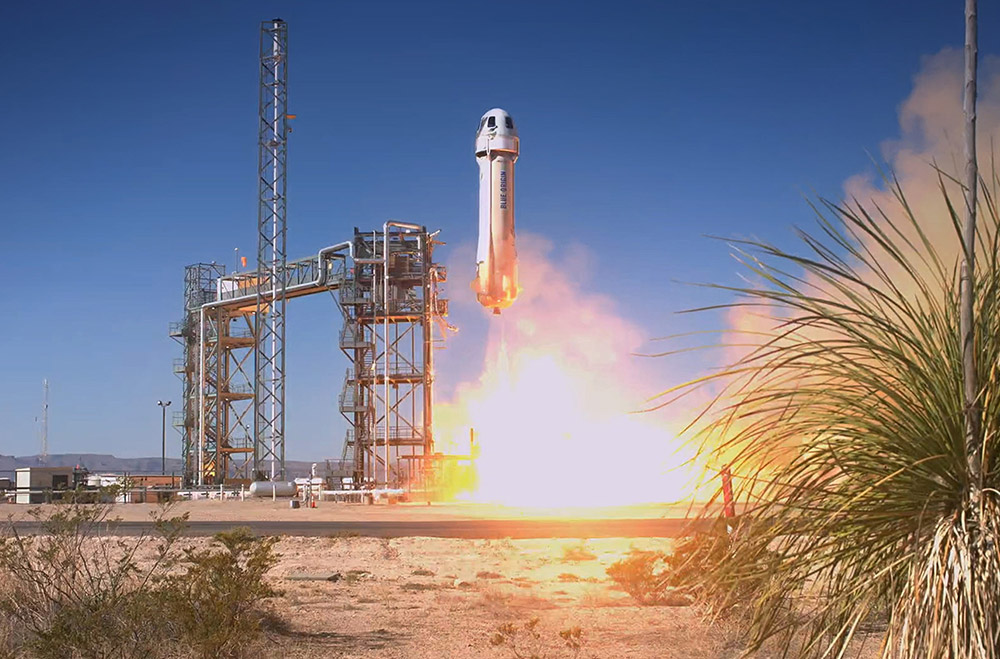Stephen Levine, executive managing director in the Industrial and Logistics Services division at the real estate firm Newmark, recalls the 1960s TV series “I Dream of Jeannie.” He mentions it when describing Florida's Space Coast, where Major Nelson and Major Healey experienced their televised antics involving a genie named Jeannie.
It's fitting that those fictional astronauts lived there, as Florida has long been a historical epicenter of the space program. Levine notes that the Space Coast has come a long way since the days depicted in “I Dream of Jeannie” or “The Right Stuff” or “Apollo 13.”
“Things are happening pretty dramatically and quickly,” he says. Last year, the Kennedy Space Center and Cape Canaveral Space Force Station set a new launch record with 72 orbital missions. By the end of this year, the launch pace is expected to ramp up to as many as two a week, according to Orlando Sentinel tallies.
Commercial space activity is taking off like a rocket. The bulk of the Space Coast launches involve SpaceX, founded by Elon Musk. Other significant players include United Launch Alliance—a joint venture of Boeing and Lockheed Martin—and Jeff Bezos’ Blue Origin.
These are sophisticated, expensive pieces of equipment with thousands of components.
What was once the province of NASA is now a booming business of sending rockets into space—sometimes carrying humans, but most often satellites. The latest State of the Satellite Industry Report from the Satellite Industry Association pegs the global space economy as a $400 billion business, with about 70% linked to satellites.
Nearly 10,000 satellites orbit the Earth, placed there by many governmental and commercial entities. Many are part of Musk’s Starlink satellite internet constellation, with more destined for orbit soon as part of Amazon’s Project Kuiper broadband internet project.
“These are sophisticated, expensive pieces of equipment with thousands of components,” Levine observes. “The manufacture of those components needs to be close to the end result, creating a supply chain path.”
The Economic Development Commission of Florida’s Space Coast claims it has seen manufacturing job growth two to three times the national rate and one of the biggest concentrations in high-tech gross domestic product. Tech-focused industrial developments are joined by stellar residential growth and nearly two dozen new hotels in the works. “An area once deemed a sleepy beach town has exploded with growth,” Levine says.
$400 billion
The business development space race is far from just a Florida phenomenon. Michael Mineiro, senior counsel with the legal and advisory firm Akin, notes that the space business is touching economies nationwide.
The space industry originally developed in places chosen for their proximity to warm weather and good transportation. “We have to be very careful about doing things too far north because if it gets too cold it affects our technology. Access to ports is crucial because things we need to move around are big and heavy,” Mineiro explains.
“Space is an extension of aviation,” he adds. “Most of the modern aviation industry in the 1950s was predicated on World War II manufacturing.”
Beyond Florida, aerospace activities grew in places like California, Texas, and Alabama. Colorado, despite colder weather, boasted proximity to strategic defense operations, which had a space component. Where space businesses develop depends on how they fit into the big picture. The ultimate end goal is launch, and the most traditional locations have been Cape Canaveral in Florida and the Vandenberg military base in California. “But in the last 15 years, we've seen the opening of other space launch facilities, and privately licensed spaceports for public and private use, as well as airports collocating with spaceports,” Mineiro says.
The supplier base is extremely diverse, now also pulling from nontraditional aerospace suppliers.
Spaceport America, located in southern New Mexico, bills itself as the world’s first purpose-built commercial spaceport. The Mojave Air and Space Port in California started as a rural airport in the 1930s but added a spaceflight license 20 years ago. Blue Origin and SpaceX have developed their own private spaceports, including in Texas. The Federal Aviation Administration lists about 20 spaceports, with facilities licensed for vertical launches in states including Alaska, Georgia, and Virginia.
Commercial activity around launch sites is significant, with many players building launch vehicles and supporting supply chains elsewhere and performing final integration and assembly near the launch sites. Other space-related industries focus on ground equipment, remote sensing equipment, in-orbit manufacturing, commercial services to the moon, and commercial habitats for private astronauts. The commercial space race is driving supplier growth nationwide. Opportunities are expanding beyond those making space-qualified hardware. “The supplier base is extremely diverse, now also pulling from nontraditional aerospace suppliers,” Mineiro says.
This growth is creating a need for both highly technical expertise and an increasing number of blue-collar space-related workers. “Just 20 to 25 years ago, building something that goes into space was very artisanal. Now, the automation of space production is one reason why space is getting more affordable, bringing in demand for blue-collar workers to work at scale,” Mineiro says.
70%
Levine echoes that sentiment, noting that there’s a need for executives, midlevel employees, and worker bees.
Space Advisors, a consulting firm, notes in a blog post analyzing space-related development opportunities that several places are “primed to lead the industry.” Traditionally dominant states like Texas, Florida, California, and Virginia are joined by tech-savvy Massachusetts, aviation-experienced Washington, and equatorial Puerto Rico. Additionally, Oklahoma, Mississippi, Indiana, Alaska, Alabama, Wyoming, Iowa, New Jersey, Illinois, and Oregon offer skilled technical workers, inexpensive land, favorable tax rates, and low-cost transportation connections.
Ultimately, space is increasingly big business with opportunities everywhere. As Levine sees in Florida, the impact of the space business is tremendous. “There is really big positive momentum in and around this geography, solely attributable to the rise of this industry.”




